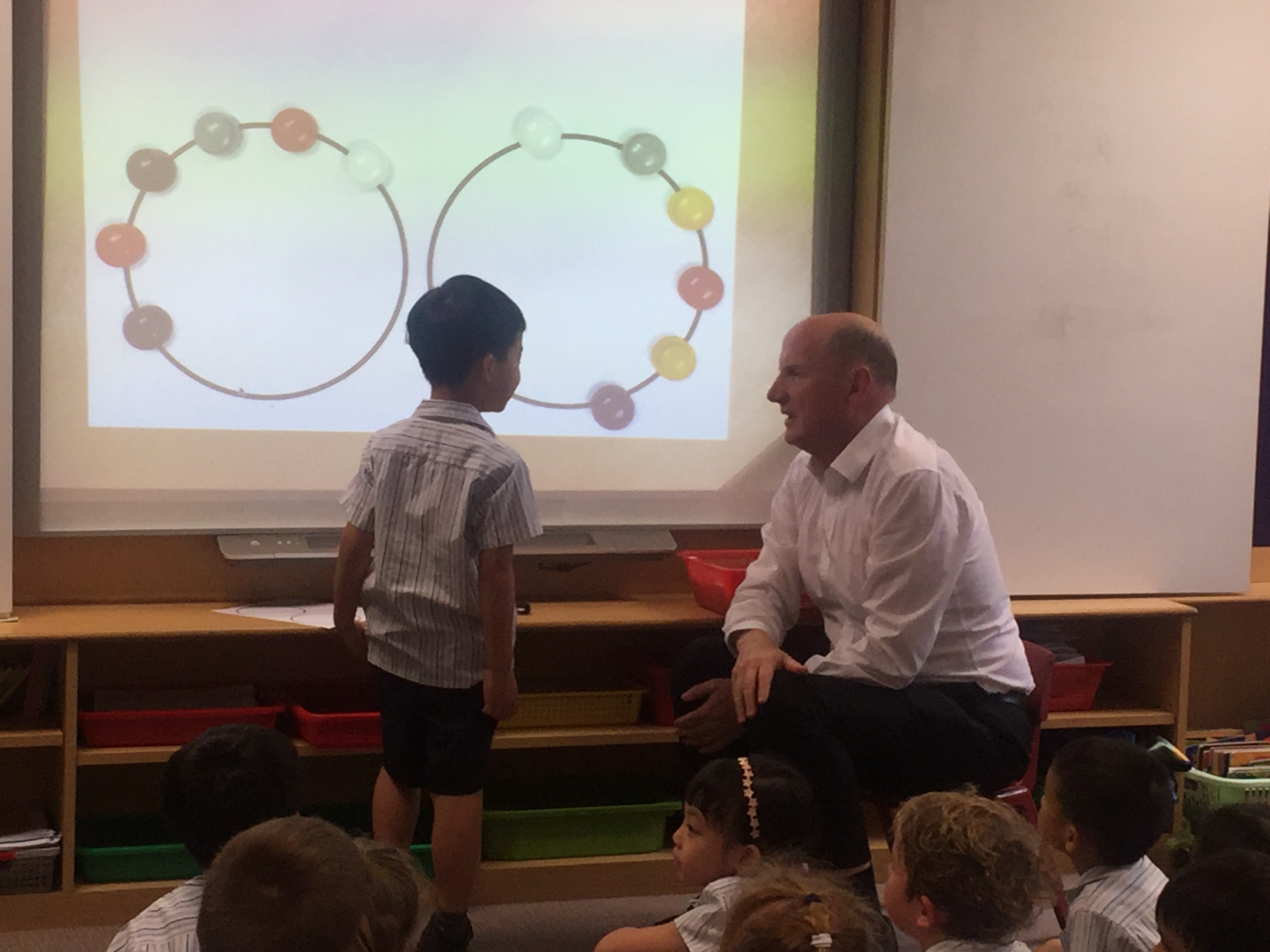
The teacher in a school in China was teaching angles for the first time to grade 2 students.
Teacher: “Do you agree?” All the students in unison: “Yes!”
Teacher: “It’s an angle.” All the students in unison: “An angle.”
Teacher: “An angle”. All the students in unison: “An angle.”
Teacher: “An angle. Understand?” Students: “yes”.
Teacher: “This is an angle. Right?” All the students in unison: “Yes.”
When I visited various schools in Asia and south Asia I had a wonderful opportunity to watch teachers teach, and to work very briefly with students. What I found most interesting about the teaching was the way in which information was imparted to students. The teacher told the students what the information was and the kids repeated it back. This happened several times before the teacher went onto the next idea and the same method of “tell-repeat-tell-repeat-tell-repeat” happened over and over again. Memorization was the secret to doing well. When in New Delhi, I watched with amazement, impressed with how much a group of students could memorize when presenting a story about a famous mathematician. It was clear that the students had written up a long, long speech and memorized it word-for-word. These children also shared very worn, old textbooks in their classes, and they had no textbook to take home with them, so they had to memorize. Rote learning is ideal for this type of thinking: quickly memorize the key words, and repeat it back. But don’t be fooled, rote learning is rote. It is not about understanding so that higher level logical thinking can happen. It is also very individualized in that there is no discussion, or sharing of information and ideas between students.
Switching out of teaching for rote learning to other methods of teaching is very, very difficult to do. Teaching for rote learning is very easy to do, and therefore, the teacher doesn’t have many opportunities to develop their teaching skills. When teaching for rote learning, the focus is on the content, and telling the students “what-it-is” or “what-to-do”. It is very easy to just stand at the front of the class and tell the kids what to do. All this requires is knowing how to do it for yourself, then telling the kids and showing them, if needed. The kids just repeat what the teacher is saying, or doing, and follows along. The consequences are that students learn to wait to be told what to do, and to do what they are supposed to with exactness, as told. Procedures are robotically followed, and students feel good because they can see the answer very quickly. The types of questions that work well with this are procedural, and those that can be completed with very few steps. Therefore, repetition of very quick-to-answer questions are given, and it appears that a lot has been taught because a lot of simple, fast questions have been completed on a sheet, or many words have been memorized and written. This is also easy for a teacher because the amount of risk for the teacher is very low. They can control what will be said, and what the answers will be.
Now let’s switch out of rote learning, to learning where the teacher is able to instill a disciplined discovery, in which skills are learned and practiced, and ideas are developed by “pulling out” ideas from the students. In this type of teaching the teacher must know how their students are thinking and the students’ understanding of concepts. This is the start of the “pulling-out” process. Once they have developed a new idea, then the skills can be developed and the questions that the students will work through will require them to apply their skills with logical thinking because the questions will not be those that the teacher has given before. The teacher’s main role is to ensure that the students have all the skills needed to answer the questions, and that they have modeled the right kind of thinking by asking questions that get students to think about what is happening. When students have this opportunity to think and work with a program that challenges their ideas, then they need to talk to others. When they naturally find themselves collaborating with others, then they start to develop many more ideas on their own, not waiting to be told what to do. They now will be asking the questions, pushing the ideas forward, becoming pro-active in the way they work with the world rather than reactive, waiting for others to tell them what to do.
Kim Langen
CEO & Co-Founder
Spirit of Math Schools



